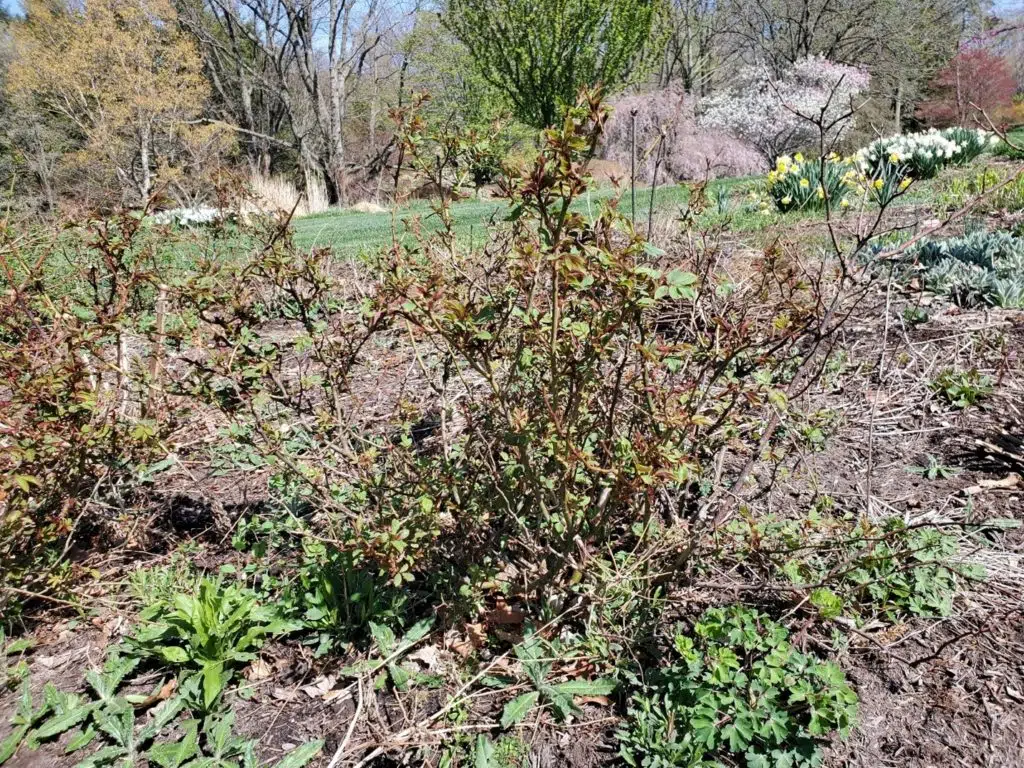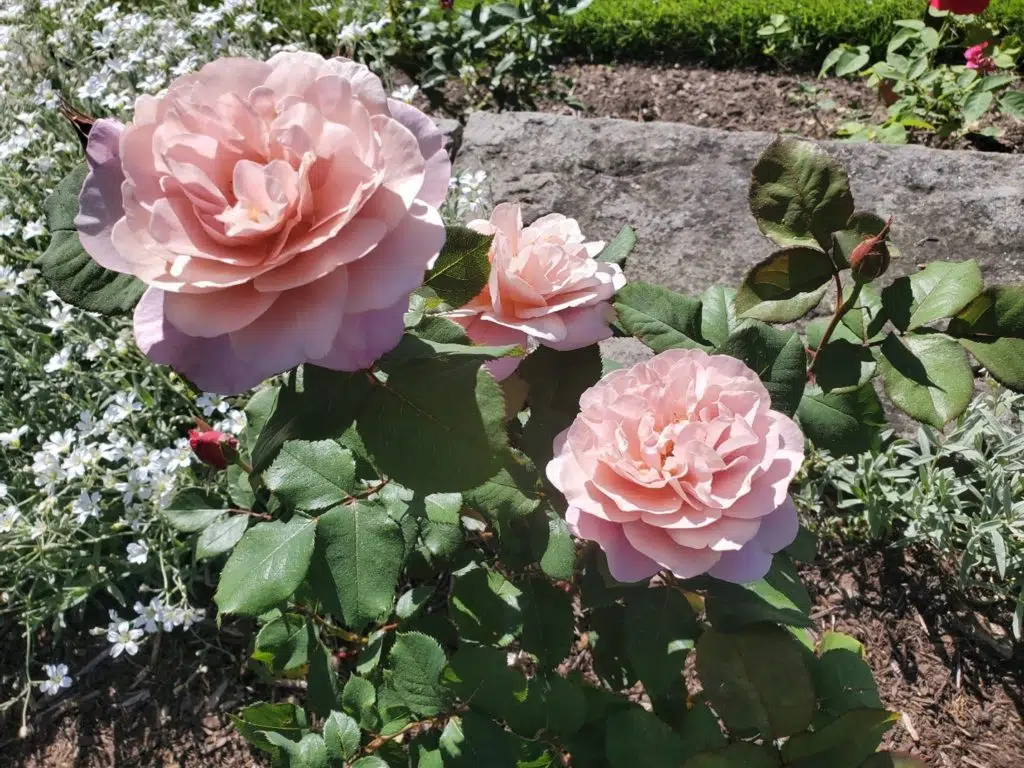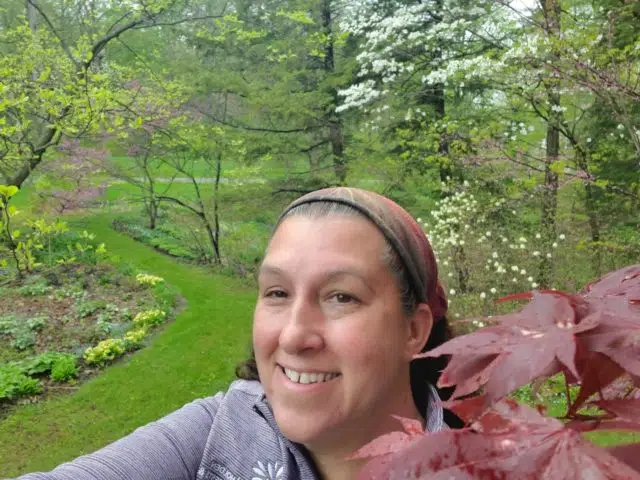
By Dawn Gerlica, Lantern Court Horticulturist
Spring has sprung and it is time – time to prune the roses! The general rule of thumb in this environment is to wait until the Forsythia starts to bloom because by that time the buds on the roses should begin to swell and grow and then you can figure out exactly what parts of the plant have survived the winter.
Not all roses should be pruned exactly the same. Different rose classes such as the Old Garden roses, including Gallica or Damask types, only bloom once a year. Pruning will need to wait until after the plants have stopped blooming or all the flowers may be cut off before they bloom. Most of the Modern Garden class of roses such as the Hybrid Tea, Floribunda, Grandiflora, Climber, and Shrub roses react well to a good pruning in the early spring and will bloom all summer.
Why do we prune roses? A rose would survive if a person did not prune it. They have been surviving for a long time without help. However, if a gardener wants a healthy rose display, pruning can help the plant grow stronger. Roses are susceptible to many diseases and although many do not kill quickly, they can make the plant rather ugly and weaken it over time. The way to avoid many problems is to reduce the number of canes and have the remaining ones aim outward in a vase shape to allow air to flow through and dry out any areas that may harbor fungal spores.

Roses often grow in a tangle of branches, and although it may seem cruel to remove them, they actually don’t need that many. Removing some means there will be less flowers produced, but the flowers should end up larger and showier. The first step to pruning is often to look at the plant and find the branches or canes that have died or are damaged to remove them along with any branches that are crossing and touching, causing damage to their own bark.
The plant can also be shortened at this time. Many people suggest removing up to 1/3 of the plant’s height down to about 2 to 3 feet tall. Some plants will get 5 feet or more, but reducing their height in the spring causes the blooms to appear where the gardener can better appreciate them. Pruning cuts should be made ¼” to ½” above a bud facing the outside of the plant to encourage the new growth to follow the vase shape.
After this initial pruning is done, look at the plant. Pick about 3 to 5 strong canes, leaning away from the center, to make up your plant when pruning is finished. If it is a rather large plant, you can leave a few more canes as long as there is space. If there are canes that are several years old, they can be very woody and do not produce flowers as well as the younger. If the plant is large and old enough to do so, these large canes can be removed leaving the younger sturdy canes to produce flowers. Small canes, thinner than a pencil, should also be removed because they are not strong enough to produce good flowers. All pruned pieces of stem and last year’s leaves should be removed from the site to prevent spreading any disease from the previous year.
After pruning, it’s a good idea to fertilize and mulch the plants. Roses are heavy feeders which means they like a good amount of fertilizer throughout the growing season. Chemical fertilizer will work for the plants, but it does little to nothing for the soil the plants are in. Adding organic ingredients to the soil benefits both the plants and the soil. The Lantern Court roses each receive about a gallon of a mix of 3-year-old garden compost, composted dried chicken manure with sand, and some wood ash which is mixed into the existing soil around the base of the plant. Wood ash can change the pH to alkaline and roses prefer slightly acidic soil, so care must be taken not to add too much. Chemical fertilizers will be applied later in the season, to avoid too much soil disturbance in the drier and hotter temperatures.
Add 2-3 inches of mulch at least 6 inches away from the main stems of the plant as the final step to getting roses ready to face a new growing season. Mulch also helps feed the soil over time and helps retain moisture for the plants in the drier months.

All this work should help roses get started strong to produce beautiful blooms for the summer months. If you prefer to visit roses rather than care for them, you can plan a visit to either of Holden Forests & Gardens campuses. The Cleveland Botanical Garden has a Rose Garden, dedicated since 1971 and at last count, there were more than 90 living rose plants at Lantern Court, part of The Holden Arboretum campus – most can be found in the formal Rose Garden, but there are also some hiding in other beds throughout the grounds just waiting for you to stop and smell the roses.


Dawn Gerlica
Lantern Court Horticulturist
Dawn Gerlica has worked at HF&G in varying capacities since 1987. She has worked under various titles, including: Seasonal, Field Botanist, and now, Horticulturist, responsible for the grounds at Lantern Court. Dawn attended Hiram College where she minored in Environmental Studies while earning a degree in Biology.












